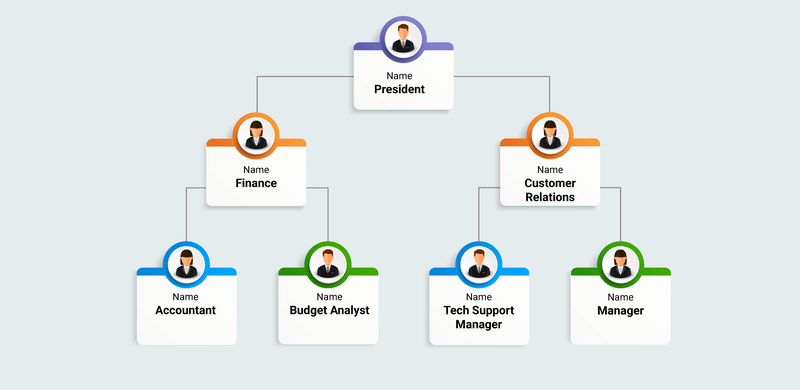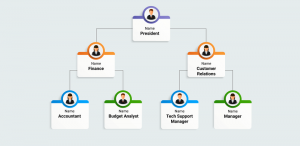A business plan is a blueprint for success. It guides you through all processes of starting and managing your company.
Well-thought-out business planning can often make the difference between success and failure. In this article, you will learn how to write a business plan step by step, which is a crucial must for all starting entrepreneurs.
What is a Business Plan and Why You Need to Write One?
A business plan is a document containing all the key elements and a business overview of your company. It is an executive summary that describes your business goals, methods for obtaining those goals, and the real time frame for implementing and reaching them.
Use a business plan template or write a free-form piece explaining your ideas and visions.
Main Reasons to Write a Business Plan
.cls-001{fill:#17262b;}.cls-002{fill:#f5c242;}.cls-003{fill:#dca437;}.cls-004{fill:#fff;opacity:0.2;}.cls-005{fill:#8ec3e8;}.cls-006{fill:#e1eff9;}
Research
To successfully launch a business, you need to come up with solid business strategies. To do that, you need to research potential clients, target audience, markets, and existing competitors.
.cls-01{fill:#17262b;}.cls-02{fill:#8ec3e8;}.cls-03{fill:#e1eff9;}.cls-04,.cls-06{fill:#3682be;}.cls-05{fill:#1e5180;}.cls-06{opacity:0.25;}
Planning
Even in such business models as print-on-demand, where inventory and up-front investment are not necessary, planning is an important step if you want to scale your business. Write a business plan to put down visions, the purpose of your business, target market, and audience as well as the time and resources you'll need.
.cls-1{fill:#17262b;}.cls-2{fill:#dca437;}.cls-3{fill:#f5c242;}.cls-4{fill:#e1eff9;}.cls-5{fill:#9e591c;}
Funds & Cooperations
Writing down a good, detailed business plan can later help you raise capital, attract various investors, venture capitalists, get a business loan, new partners, and skilled employees. A strategic plan and overview will help other companies feel confident about investing their funds in your business's success.
Types of Business Plans
- Standard. A standard business plan needs to be very detailed, specific, and convincing. It takes more time to write about business planning, however, investors and lenders are more likely to request this plan.
- Lean. If your business is simple and easy to explain, you will more likely choose a lean plan. It only consists of the key characteristics and ideas. It is more of a quick summary of the business. Some investors may ask for additional information with this business plan.
While small businesses can get through with a lean plan, most of them need to write a standard – typical business plan. Not just to attract investors, extra funds, and business partners, but to get a full idea of your own vision and time frame for implementation.
That’s why we want to provide you with a detailed step-by-step guide on how to write the standard business plan.
Creating a Standard Business Plan Step by Step

Although the standard business plan is more time-consuming, as it takes longer to write, it lets you create a fully thorough competitive analysis of your business. Whether you have a small business or a big one, write a business plan to gather all pros and cons, thus gaining a competitive advantage amongst competitors.
Let’s take a detailed look at all the sections necessary for a standard business plan.
1. Executive Summary
The executive summary is the most important part of your business plan. It is the first thing people see when reading it, so make it as appealing, compelling, and convincing as possible.
This part should be two pages at the most and easy on the eyes. It has to catch the attention of the reader, so briefly explain:
- What does your business do? Shortly describe your business and its functions.
- What are your business objectives? Your visions and goals? What do you hope to achieve?
- What are your products or services and how will they differ from others? Give short descriptions and explanations.
- What are the financial projections of your business? How much money do you currently earn and/or hope to earn in the future?
- What is your target market? Who is your product or service meant for? Who are the potential customers?
- What are your marketing and sales plans? What is the marketing strategy? How do you plan on reaching the target market with specific marketing efforts
- What is your team? Briefly describe all team members. Who is involved in the business and who does what.
The executive summary is meant to showcase all the best aspects of your business.
Pro tip: write this part last. Pick out the highlights from each section of your written business plan and create a summary to showcase your intellectual property.
2. Company Description
This is the section meant for bragging. Show off the strengths of your company. Be passionate about it and start with the most important information – the key characteristics of your business and company overview.
Include:
- Company name and legal structure. Describe whether you’re a sole proprietor, in a partnership, corporation, or something else. Be clear and concise.
- Business model. Explain what type of business it is. Whether it’s a print-on-demand (POD), business-to-customer (B2C), business-to-business (B2B), or another.
- Participants of the company. Write down all the owners, key personnel, and partners.
- Location of your business. Describe the physical location and premises of your business. The benefit of having a POD business model is the lack of worries about location and physical premises. Everything is done digitally.
- Company history. Tell about the foundation of your business. How did it start and what encouraged you to perceive this path?
- Goals and mission statement. This is the part you want everyone to read. Explain the mission and objectives for your business. How and why does it differ from others? Describe your short and long-term goals.
Make your company shine amongst direct and indirect competitors. Writing a business plan helps to boost your business strategy and thoroughly understand the purpose and goals for you, a potential business partner, team members, and potential investors.
3. Market Analysis
Before designing products and services, and offering them to the target audience, it is important to thoroughly understand, examine and know your market.
That’s why it’s important to conduct market research and analysis when writing a good business plan, to gain a clear view of the competitive landscape.
To choose the right market for your product or service, you need to know:
- What are your potential customers? Who will buy and use your product or service?
- What are their buying habits and the costs they’re willing to pay?
- How large is your desired target market?
- Who are your main competitors? Analyze their methods, strengths, and weaknesses.
How to Do Market Analysis
- Research your industry. It is important to include a detailed description of the current state of the industry and its trends. Describe the overall outlook and growth predictions, based on data.
- Identify your target market. Don’t waste time trying to convince everyone in the world to use your product. Target only certain customers. Lay out the characteristics of a specific audience and focus on their traits and needs to drive them to your business.
- Know your Competition. List all your main competitors. Conduct a SWOT analysis on each of the established businesses to highlight what they have and what you don’t.
- Be aware of obstacles. Write down all the barriers that might stop you from entering the market. Examine your weaknesses whether it is a small business or a grand corporation. Who can enter the market? When? Are there regulations? Limited access to resources and distribution channels?
Within the analysis, explain why your business differs. What sets you apart from your competition? And what do you need to do to make it happen in the future?
This analysis grants you and others an understanding of the industry and target market. It lets you comprehend your customers and reduce risks.
Whether you are submitting a funding request or striving for business success, a competitive analysis will help understand what successful businesses do, how and why it works, and how you can do it better.
4. Organization and Management
This section lets you explain how your business is run and handled, and who is involved and responsible for all the actions. It is needed to make sure there are no overlaps in the structure and confusion with responsibilities.
Organization
Define the type of your business and positions within the company. Business plans need an understanding of how you will provide the workflow. Provide this section in an organizational chart or graph form.


- List all the roles. Put in a chart of all the jobs in the company. Existing and necessary ones. Even if you don’t have all the employees yet, this way you can show your vision and intention to make the company run perfectly. Present the company structure with clear indications on who reports to whom, who is in charge, and who is responsible for what. From CEO to the last employee.
- Mention third parties. List all of the outside consultants, independent contractors, freelancers, or in the POD dropshipping model – print providers – you plan on working with.
Management
Once the structure of your company is clear, explain who are the people behind each role. List the management people, their positions, and responsibilities.
Why are they there? From ownership and board members to the full management team.
Include the following information on each member/owner/manager:
- Name
- Position in the company
- Duties and responsibilities
- The extent of involvement and ownership (percentage, active, silent, etc.)
- Education
- Skills and experience in relevance to their duties and responsibilities
- Compensation (how much, what type, and form).
Explain in your business plan how each person’s skills and experience will contribute to the growth and success of the business. This internal company description highlights all the main features you and your team have to offer to have a competitive advantage over other businesses.
5. Products and Services


Although your products or services are mentioned multiple times throughout the business plan, there needs to be a section dedicated specifically to highlight every key characteristic of them.
Product positioning is one of the most important parts of starting a business. Explain your plans and competitive advantages through a detailed description of your products or services.
When writing a business plan, this section should include:
- Characterization. Write a description of your product or service. What is it? How does or will it work? Why do customers need it?
- Comparison. How does your product or service differ from others? What makes it better in contrast to your competitors? Why should customers prefer you over existing businesses?
- Costs. How will your product or service be priced? What is the pricing strategy? And how does your price fit in and compare to the current product and service businesses in the market?
- Fulfillment. Will you be producing, packing, and shipping your product or coordinate with third-party providers? How will your orders be processed and fulfilled?
- Marketing and sales plan. What is your sales strategy to stand out amongst many business owners with your specific product or service? Will you market yourself online or through retail? What are your marketing tools?
- Additional requirements. Are there any specific raw materials, equipment, or other needs to provide the fulfillment of your product or service?
This section should be the centerpiece of a successful business plan. Capture the attention of those you want to work with. Show your professional side, be precise and clear in the descriptions and highlight your product or service from all angles.
6. Customer Segmentation


To maintain a successful relationship with diverse groups of people, you need to understand their main traits, means of communication, and unique needs. That’s why you need to divide them into customer segments.
This helps you distinguish your best customers and reach them through various channels when implementing a new business idea.
How to Segment Your Customers
- Demographically. By age, gender, marital status, income, and education. (A 18-year-old will have a different budget than a 50-year-old).
- Psychographically. By their interests, personality, attitude, and values. People of various ages, backgrounds, and statuses can have the same interests. Understand their needs to know what they value in a product or service.
- Behaviourally. By their actions and tendencies, product use, and hobbies. Segment your customers by their hobbies and tendencies to see how your product or service can benefit them.
- Technographically. By the use of apps, mobile phones, computers, and software. How would customers interact with your website? Where your online visitors are coming from and how to reach new ones?
- Geographically. By their location (country, state, city, town), available means of transportation, or preferred language. (Place ads on city subways or the local bus to gather a customer base).
Customer segmentation helps you improve customer relationships and reach your target audience through marketing, sales, service, and product efforts. Communicate more efficiently with your customers to meet their specific needs and offer the best value proposition for them.
7. Marketing Plan


This section of your business plan explains how you will attract customers to your product or service and how you will advertise directly to them over a given time period. Specify the types of advertising you will use, at what times, in what manner, and at what cost.
How to Write a Marketing Plan
- Set your marketing goals. Briefly describe the main mission of your business. Who do you want to sell to and how? Set your goals according to the SMART format. Which stands for Specific, Measurable, Attainable, Realistic, and Time-Bound.
- Identify your target personas. Those are fictional representations matching your ideal customer based on your preferred customer segments. Create buyer personas to describe who you want to attract. Customize the marketing strategies accordingly.
- Decide on your content. This part highlights what types of content and which channels you will use for. Write down:
- Type of content. Decide if it’s going to be videos, blog articles, guest posts, infographics, and more.
- Amount of content. Describe your content volume on a daily, weekly, monthly, and even yearly basis. Set it according to your business goals.
- Content distribution channels. State which platforms you’ll use to promote your business. Such as social media (YouTube, Instagram, TikTok, Facebook, Twitter, and others), personal website, or other platforms.
- Set a marketing budget. Although many channels will support free advertising and traffic, some aspects will be costly. You have to spend money to make money. List down all marketing costs and purposes, such as paid promotion, print advertising, social media costs, giveaways, free samples, and more.
8. Logistics and Operations Plan
Manage your workflow from production to delivery with a well-thought-out logistics plan. Cover a full outline of the supply chain step by step. Whether you are writing a business plan to improve the financial health of the company or simply for your own planning, logistics is an important topic to cover.
Describe the following sections:
- Suppliers. Who will provide your business with materials and how? In case you’re not making your own products, where will the products be produced?
- Inventory. Will you keep stocks or products or choose the easy and worry-free print-on-demand approach? Where will the inventory be kept? And how will you manage it?
- Facilities and equipment. Where will your team work? Do you plan to have a physical store? What technology is needed for your business? Write a detailed list and description from machines and computers to light bulbs.
- Production. Do you plan on making and manufacturing or dropshipping your products? How long is the production process? What obstacles could there be for production fulfillment and how would you handle them? (Busy seasons, pandemic restrictions, etc.).
- Shipping and delivery. Who will handle all the fulfillment processes such as packing, shipping, and delivery? Will you do it yourself or choose a third party?
Logistics and operations plan helps you and others thoroughly understand all business processes down to fulfillment. It also helps you manage and set prices accordingly.
While thinking about the easiest ways to start a business, keep in mind the print-on-demand (POD) model. The logistics and operations plan will be of no concern with this approach.
POD means no investment, no inventory, no worries. The lack of a physical store means no hassle with storage space, equipment, stocks, or employment. Sell digital items on a digital platform with third-party partners – print providers – who fulfill the order for you from printing to packing and delivery.
9. Financial Plan


Back up your ideas and visions with figures and data. This section is important if you wish to win over investors or get a loan. Or simply get a clear understanding of the financial aspect of your business.
A financial plan mainly consists of three business financials: an income statement, balance sheet, and cash flow statement. The numbers provide a clear image of financial forecasts. Explain your revenue streams, how you’re going to use, spend, and earn money within your business.
How to Write a Financial Plan
From cash flow statements and balance sheets to profit margins – a financial plan should cover all financial aspects of your business ideas. And here’s what you need:
- Financial indicators and ratios. Write down the most important information for measuring your company’s performance. Is it gross margins, sales growth, current assets/liabilities, or others? How will you monitor your success?
- Sales forecast. This is an income statement that estimates how much your company expects to sell within a certain period. Accurate sales forecasts allow companies to make better business decisions and predict short and long-term performances.
- Balance sheet. Income statements and balance sheets provide information about the profitability and financial health of the company. Balance sheets offer a look at how much equity you have in your business. List all the business assets and liabilities to fulfill the equation: assets – liabilities = equity.
- Cash flow statement. This part shows physical money moving in and out of your business. Describe how much money is invested and spent, and how much money is in your revenue. Provide a detailed description of what happens to the cash flow within a certain period to better plan other operations such as hiring staff or making significant purchases.
The main goal of these financial statements is to prove that your business is viable and your idea is implementable.
Business Plan Pro Tips For Beginners


- Keep it clear and simple. Describe your ideas and all processes clearly. Avoid buzzwords, acronyms, or unnecessarily complicated sentences and be straightforward.
- Know your audience. Before entering a market or creating a product, research and create the overall outlook of your perfect customer. Conduct surveys, inspect your competitors. Monitor feedback, comments, and engagement.
- Use informative visuals. Explain data, numbers, company hierarchy, and important information in simple pictures, diagrams, or charts. They are eye-catching and make the process of understanding simple and easy.
- Have a consistent voice and tone. The tone in your business plan refers to your approach towards the reader. Be genuine and sincere in your writing. Express a high level of confidence and professionalism.
FAQ
Why do I need a business plan?
A business plan is an important must-have document that explains how to turn your idea for a product or service into reality. It can help you fully see the overview of your business and attract investors and new partners.
How long should a business plan be?
The volume of your business plan differs depending on the size of your company. A lean business plan should be no longer than two pages. However, a standard business plan should be covered in 20-40 pages. More or less, depending on the size of your business and details included.
Can I hire someone to create a business plan?
Absolutely. If writing isn’t your cup of tea or you simply don’t have the time for it, hire a business expert that will do it for you. Another option is to use a business plan template that shows you how everything is done.
Do I need a business plan for a dropshipping business?
Yes. Sure, dropshipping gives you the benefit of leaving out several sections of the standard plan. Or it allows writing them seemingly shorter (such as customer segmentation and logistics). However, it is still important to have a thoroughly described and put-together overview of your business. It can only do you good by reducing risks, overlaying in actions, and misusing marketing ideas.
Do I need to include all of these sections?
We suggest that you do. All the sections cover specific areas that can only help you improve your business. A well-written plan helps you see if your ideas can be implemented and turned into reality, and whether your business will be successful.
An alternative is to write a lean plan. It will not be as thoroughly captured, but it will give you a complete picture of your business and its functions.
What is one purpose of writing a business plan before entering the market?
It helps you organize your business and prove to yourself and potential funders or partners that your business will be successful. The purpose of business plans is to identify, analyze and describe an opportunity while examining its technical, financial, and economic feasibility.
To Sum Up
No matter the size or type of business, it is important to highlight all the pros and cons of it. Map out the structure and processes, do market research, analyze your customers, competition, and every last detail in the nine provided steps:
- Executive Summary
- Company Description
- Market Analysis
- Organization and Management
- Products and Services
- Customer Segmentation
- Marketing Plan
- Logistics and Operations Plan
- Financial Plan
Focus on what makes your business special and different from others. Write a powerful and well-thought-out mission statement and prove your business is worth it. Measure the success of the business before investing time, money, and precious resources in it. That’s what having your own business plan is for.
Make it happen today!
The post How to Write a Business Plan Step by Step: The Ultimate Beginner’s Guide appeared first on Printify.







